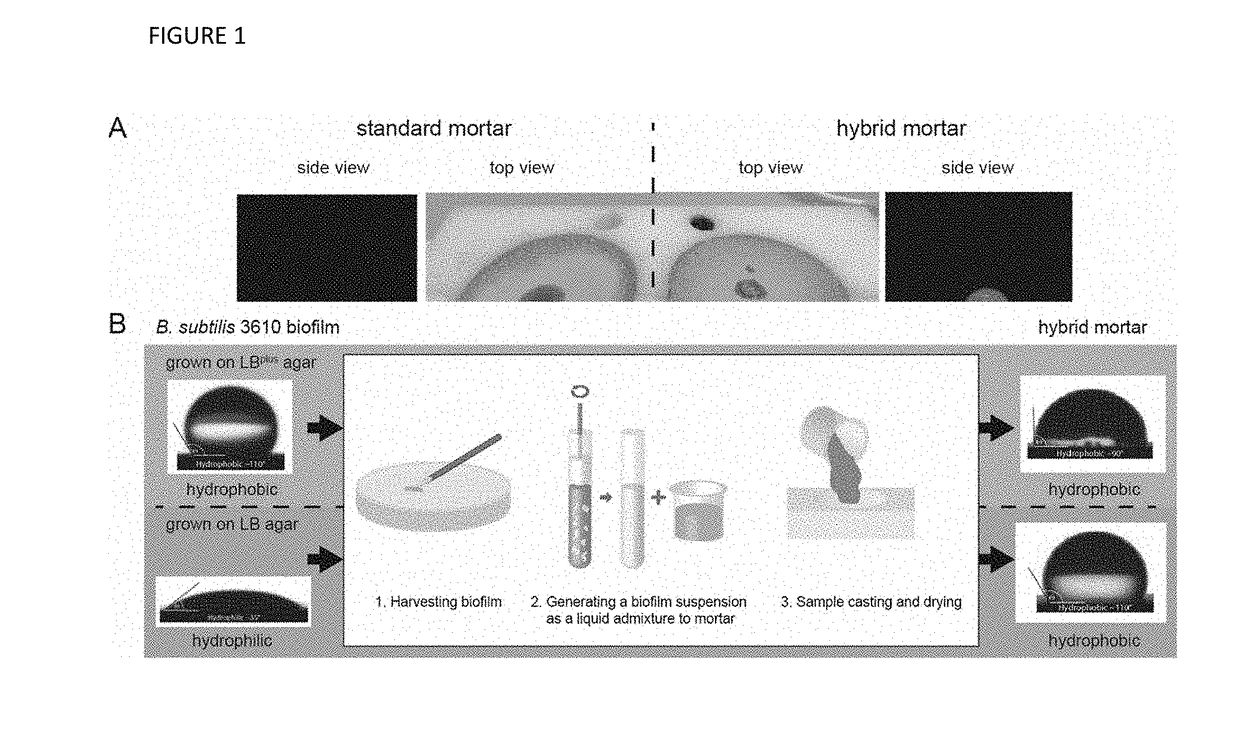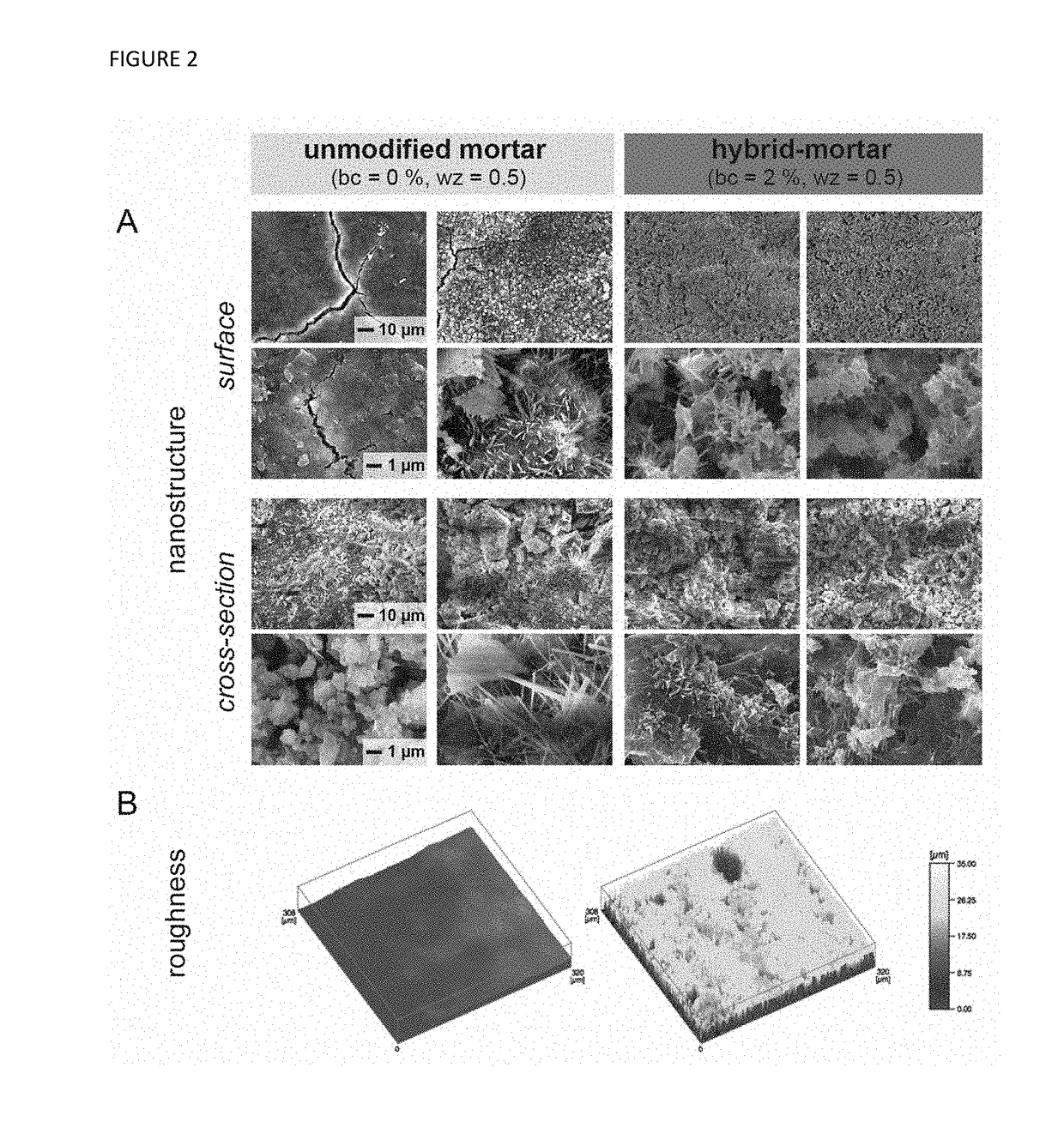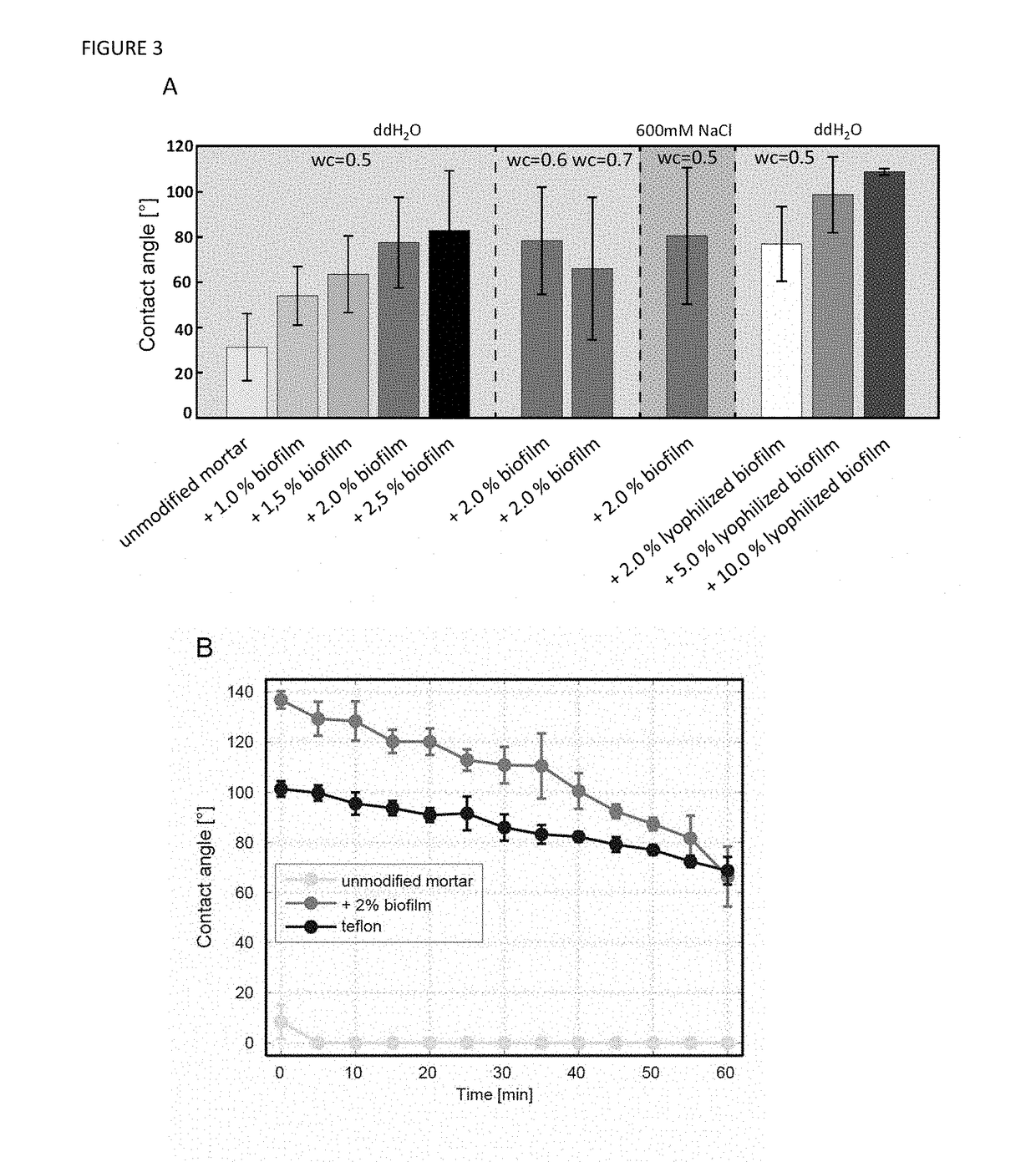Engineered hybrid cement-based composition with increased wetting resistance
- Summary
- Abstract
- Description
- Claims
- Application Information
AI Technical Summary
Benefits of technology
Problems solved by technology
Method used
Image
Examples
example 1
[0067]Biofilm Formation and Admixture Preparations
[0068]B. subtilis 3610 wt strain was used for the hybrid-mortar sample preparation. Overnight cultures of the strain were grown from a frozen glycerol stock in 15 ml LB (Luria / Miller) medium at 37° C. and 90 rpm in a shaking incubator (Certomat BS-1, Sartorius AG, Gottingen, Germany) for 16 hours. The bacterial suspension was then plated in 100 μl volumes onto 1.5% (w / v) agar plates containing LB (Luria / Miller) or LB plus (LB+) (Luria / Miller with additional 1% [vol / vol] glycerol and 0.1 mM MnSO4 (adapted from M. Shemesh and Y. Chaia, A combination of glycerol and manganese promotes biofilm formation in Bacillus subtilis via histidine kinase kind signalling, Journal of Bacteriology, 2013). Biofilm was grown by incubating the primed agar plates at 37° C. for 24 hours (cultivating and biofilm growth process adapted from S. Grumbein, M. Opitz, and O. Lieleg, “Selected metal ions protect Bacillus subtilis biofilms from erosion,” Metallomi...
example 2
Determination of hydrophobic properties
[0073]Hydrophobicity of the hybrid-mortar was examined by different principles (for volume and surface characterization), aiming to quantify the overall interaction behaviour with water. A contact angle measurement setup, scanning electron microscopy (SEM) and a profilometer aimed to elucidate the hydrophobic surface properties of the hybrid-mortar. Volume properties of the hybrid-mortar were examined through water flow rates, both pressurized and static.
Contact Angle Measurement
[0074]The contact angle formation on the hybrid-mortar surface was quantified by a contact angle measurement setup. The setup consisted of a perimeter stand with a camera mount, adjustable on the vertical and horizontal axis. A camera (Flea3, Point Grey, Richmond, Canada) with a high resolution Varifocal lens was mounted onto the perimeter stand. Light was directed from above with a slight declination, for optimal lighting conditions. A volume of 20 μl ddH2O was pipette...
example 3
Hydrophobic Hybrid-Mortar with B. subtilis 3610 Wild Type
[0079]When grown on LBplus-enriched agar, the bacterial strain Bacillus subtilis 3610 forms biofilms (BF) with strong hydrophobic surface properties similar to what was described before for MSgg agar (A. K. Epstein et al., Bacterial biofilm shows persistent resistance to liquid wetting and gas penetration, PNAS 108(3), 995-1000 2011). Those hydrophobic properties can be quantified by determining the contact angle θ, i.e. the angle formed at the three-phase junction of a water drop which is placed onto the solid surface. For a drop of 20 mL ddH20, a very high contact angle in the range of θBF,LBplus≈110° was found (see FIG. 1) which is comparable to the contact angle obtained for water on Teflon. In contrast, an unmodified mortar (UM) sample with a water / cement ratio of wc=0.5 showed strongly hydrophilic behaviour with a contact angle of θUM=30°.
[0080]In order to test whether the strong hydrophobic property of the biological ma...
PUM
| Property | Measurement | Unit |
|---|---|---|
| Fraction | aaaaa | aaaaa |
| Fraction | aaaaa | aaaaa |
| Fraction | aaaaa | aaaaa |
Abstract
Description
Claims
Application Information
 Login to View More
Login to View More - R&D
- Intellectual Property
- Life Sciences
- Materials
- Tech Scout
- Unparalleled Data Quality
- Higher Quality Content
- 60% Fewer Hallucinations
Browse by: Latest US Patents, China's latest patents, Technical Efficacy Thesaurus, Application Domain, Technology Topic, Popular Technical Reports.
© 2025 PatSnap. All rights reserved.Legal|Privacy policy|Modern Slavery Act Transparency Statement|Sitemap|About US| Contact US: help@patsnap.com



